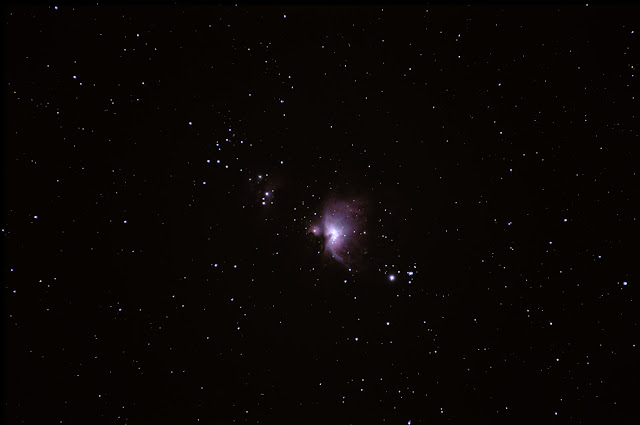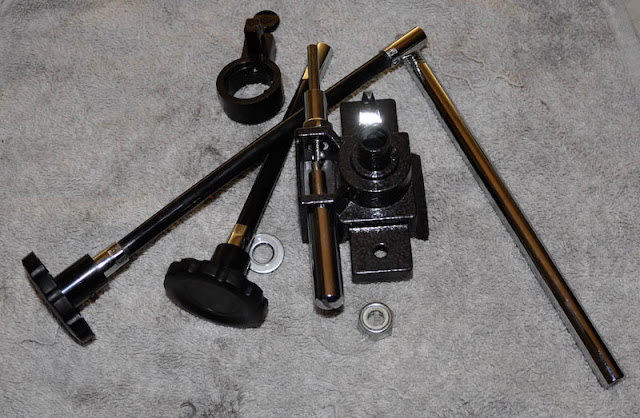In the last post I talked about some of the big problems of taking pictures of the dark sky. This post is about the solutions. I can solve two of the three problems: we are moving (so the sky appears to be in long exposures and high magnification), and high sensitivity means more noise in the sensor.
By moving the camera with the sky one can take very long exposures at high magnification, and therefore not need to use high ISO settings to gather a lot of light. First we need to control the camera; The Nikon D90 doesn't natively have a setting for more than 30 seconds of exposure per button press. It does, however, have a "bulb" mode that allows longer shutter times. Also it would be nice to take multiple exposures without having to touch the camera, as well as program in some delay before starting so that any fiddling doesn't leave the camera shaking when the shutter opens. Solution:

Ebay, $32. Intervals, exposure times longer than I would ever want to, delays, ability to repeat the shot without having to touch anything.
Now about the tracking; normally when you want to get in to this game bigger is better (on some level). Heavier, harder, larger bearings mean less shake, more precision, and overall better images. It also means more expensive. The good news for me is that I'm not trying to compete with Hubble, just engage my spirit a little, and I've also got to be very size and weight conscious since I intend to lug this thing a long distance.
For these reasons I picked up a Celestron CG-2 equatorial mount off of ebay for a whopping $60, and a not-so-matching drive motor for it. An equatorial mount works by having one axis that matches the rotation of the earth in order to counteract its motion. Normally this has all kinds of other adjustment stuff on it to assist in pointing a telescope, but that very basic part was all that I need, plus a way to mount the camera itself. I chose to hack off all the parts that mounted a telescope, counterweight, and whatever else didn't serve my purpose and simply mount the same ball mount I use for all my tripods:
(some of the extra bits removed)
(The result)
I had to "manipulate" the mounting system for the drive motor using a universal adapter (hammer) and create a a couple of new parts in order to mount the ball head in a simple and removable way. All in all I'm pretty proud of my work and it's plenty solid enough for my purposes. It lacks all the things that make a real imaging system like guide scopes, autoguiders, heavy counter weights, adjusters for other directions, etc, etc. Once in the field I'll have to set up without any of the normal accouterments, calibrate on the fly, and hopefully be off and running without too much trouble.
Next? Testing and practice...














